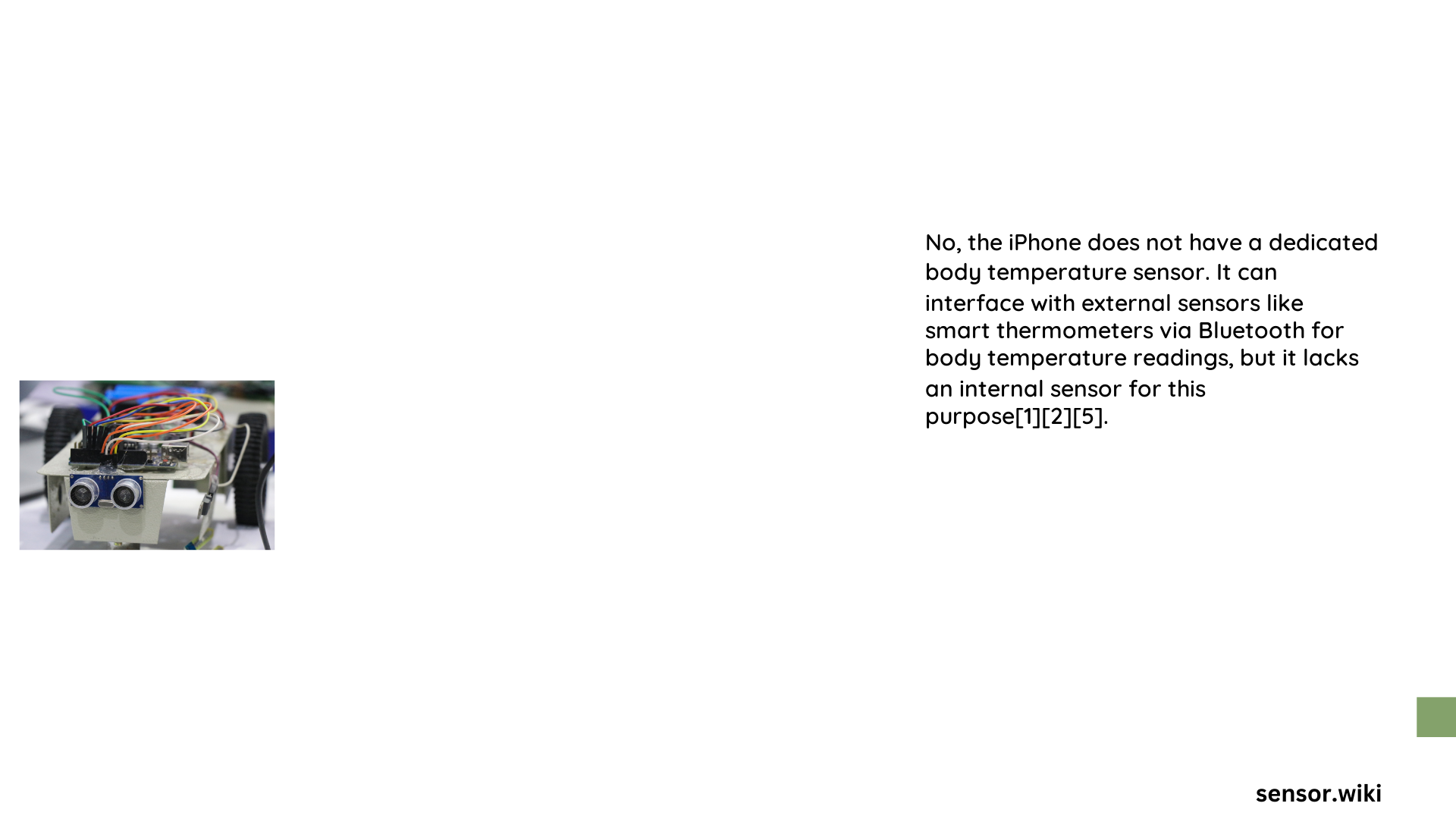Modern smartphone users often wonder about their device’s health monitoring capabilities, specifically questioning whether an iPhone can directly measure body temperature. Despite advanced technological features, iPhones currently lack a dedicated body temperature sensor for human temperature readings. The internal temperature sensors are exclusively designed for monitoring device components like battery and processor, not for medical temperature tracking.
What Temperature Sensors Exist in iPhones?
Can iPhones Detect Internal Device Temperature?
iPhones include specialized temperature sensors that monitor internal device temperatures, primarily focusing on:
– Battery temperature regulation
– Processor heat management
– Preventing device overheating
– Protecting internal electronic components
| Sensor Type | Purpose | Location |
|---|---|---|
| Internal Thermal Sensor | Device Protection | Battery/Processor Area |
| External Component Monitoring | Performance Optimization | Integrated Circuits |
Why Can’t iPhones Measure Body Temperature Directly?
The fundamental limitations preventing direct body temperature measurement include:
– Lack of specialized medical-grade temperature detection hardware
– Design prioritizing device performance over medical diagnostics
– Precision requirements for accurate human temperature readings
– Complex thermal sensing mechanisms not integrated into current iPhone models
Alternative Body Temperature Measurement Solutions

What External Devices Work with iPhones?
Users seeking body temperature tracking can leverage:
– Bluetooth-enabled smart thermometers
– Wireless medical temperature devices
– Health-tracking accessories compatible with Apple Health
– Specialized smartphone-connected temperature measurement tools
How Can Users Track Body Temperature?
Recommended approaches include:
1. Use dedicated medical thermometers
2. Connect Bluetooth health devices
3. Utilize specialized health tracking apps
4. Manually log temperature readings in health applications
Technical Insights into Temperature Sensing
What Makes Medical Temperature Sensors Different?
Medical-grade temperature sensors differ from iPhone’s internal sensors by:
– Offering higher precision measurements
– Designed for direct skin contact
– Calibrated for human body temperature ranges
– Providing real-time, accurate readings
Future Potential of Smartphone Temperature Sensing
Emerging technologies suggest potential advancements:
– Research into non-invasive temperature detection
– Development of more sophisticated sensor technologies
– Integration of advanced thermal imaging capabilities
– Potential incorporation of medical-grade sensing mechanisms
Practical Recommendations
What Should iPhone Users Do?
- Invest in external Bluetooth thermometers
- Use dedicated health tracking accessories
- Consult healthcare professionals for accurate temperature monitoring
- Stay informed about emerging smartphone health technologies
Technological Limitations and Considerations
Why Don’t Current iPhones Have Body Temperature Sensors?
- Complex medical-grade sensing requires specialized hardware
- Current design prioritizes general device functionality
- Significant engineering challenges in precise thermal detection
- Regulatory and medical certification complexities
Conclusion
While iPhones represent cutting-edge technology, they currently cannot directly measure body temperature. Users must rely on external devices and professional medical tools for accurate temperature tracking.
Key Takeaways
- iPhones lack dedicated body temperature sensors
- Internal sensors monitor device temperature only
- External devices provide accurate temperature measurement
- Future technological advancements may introduce more sophisticated sensing capabilities
Reference:
– Apple Health Documentation
– Medical Device Integration Research
– Smartphone Health Monitoring Trends
